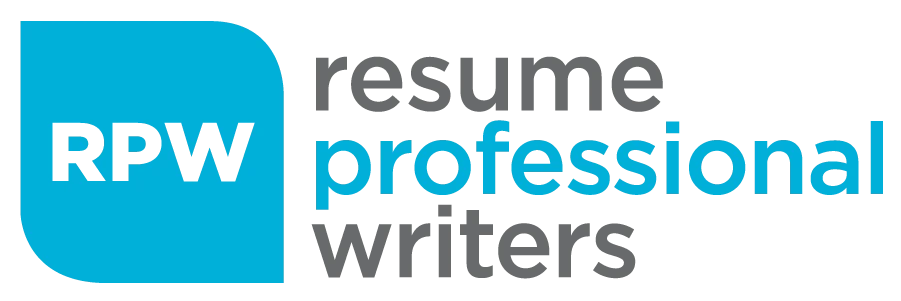You don’t need to know everything to land the job. What really matters is showing your readiness to grow, improve, and take on new challenges. Employers value candidates who are curious, adaptable, and open to learning, and these are qualities that set you apart in a competitive job market.
In this blog, you’ll learn what it means to have a willingness to learn, how to highlight it on your resume, communicate it in interviews, and use it to unlock real career growth. Whether you’re just starting out or planning your next move, this mindset will guide you toward the future you’re building upon. Keep reading!
What Does It Really Mean to Have a Willingness to Learn?
Having a willingness to learn means you’re open to picking up new ideas, tools, or ways of doing things—even when they’re unfamiliar or challenging. It shows that you’re not stuck in your ways and that you’re ready to grow instead of just relying on what you already know.
Maybe you’re learning how to use new software, adjusting to a different work style, or trying a task you’ve never done before. When you stay open and give it your best, it becomes apparent to everyone else that you’re serious about professional development by growing your knowledge and skills.
More importantly, this isn’t just about being teachable. Instead, it means you’re eager to learn and grow professionally and ready to face new challenges. Even if you don’t have every skill listed in a job description, your eagerness to learn and improve signals employers that you’re worth investing in.
Why Eagerness to Learn and Grow Sets You Apart
Your willingness to learn isn’t just an attitude that’s nice to have. On the contrary, it’s one of the top traits that makes you stand out. Here’s why.
1. It Shows You’re a Self-Starter
When you’re willing to take the lead in learning something new, it tells hiring managers you won’t wait around for instructions. You look for ways to improve, solve problems, and take ownership of your work. This kind of attitude is what employers want: someone who adds value without being micromanaged.
2. You Bring a Growth Mindset to the Table
Having a growth mindset means you believe your abilities can improve through effort. Instead of fearing mistakes, you use them as chances to grow. This mindset is powerful because it focuses on your determination, not only in doing your job today, but also in getting better every day.
3. You Add Long-Term Value to the Team
Skills are taught, but not attitude. When you’re willing to learn, you prove you’re not just thinking short-term; you’re also building a foundation of professional development that allows the team grow. Consequently, employers see you as someone who will continue to improve and contribute over time.
4. You’re Ready to Adapt and Keep Up
Jobs and tools are always changing. Someone who is eager to learn and grow professionally doesn’t get stuck or left behind. Instead, you stay flexible, ready to learn new knowledge and skills, and able to shift with the needs of the company. That kind of adaptability is rare and valuable.
5. You Help Create a Positive Learning Culture
When you’re excited about learning and development, that energy is contagious. You encourage others to grow, share ideas, and support each other’s progress. Employers love team players who raise the bar and contribute to a workplace where everyone gets better together.

How to Highlight Your Willingness to Learn on a Resume
Beyond listing your jobs, your resume gives you a chance to show who you are and what kind of team member you’ll be. Employers don’t always expect you to know everything, but they want to see that you’re ready to learn, stay curious, and take initiative.
Below are practical tips to communicate that attitude in different sections of your resume, with real examples and simple strategies to make your growth mindset shine through.
1. Professional Summary: Start with a Growth-Focused Mindset
The top of your resume is where hiring managers look first. Use this space to briefly introduce yourself while also making it clear that you’re eager to grow.
What to write:
Mention your attitude toward learning and how it helps you succeed in any role. Even if you’re entry-level or changing careers, a strong summary that conveys your flexibility and motivation will quickly grab attention.
Example:
“Resourceful and adaptable professional with a strong willingness to learn and grow in new environments. Always eager to expand skills, take on new challenges, and contribute to team success.”
Why it works:
This immediately tells the employer that you’re not just looking for a job—you’re also looking to grow with the company. It positions you as someone who’s motivated and forward-thinking from the start.
2. Skills Section: Go Beyond Technical Know-How
This part of your resume isn’t just for listing software and tools. It’s also a great place to display soft skills that emphasize your attitude toward learning.
What to include:
Blend both technical skills (software, tools, and languages) and soft skills (adaptability, curiosity, and initiative).
Example skills to list:
- Quick learner
- Open to feedback
- Adaptable in fast-changing environments
- Self-motivated
- Eager to develop new skills
- Strong communication
- Committed to professional development
Why it works
These skills give the employer insights into your willingness to learn, adaptability, and openness to growth. They paint a picture of someone who’s easy to work with and constantly seeking ways to improve.
3. Work Experience: Use Real Examples of How You Learned and Grew
Take advantage of this section to lend credence to your growth mindset. Use bullet points that show you took initiative, learned something new, or improved a process by acquiring a new skill.
How to do it:
Each job you list should include 1–2 examples of a time you went beyond your regular tasks to learn something valuable or help the team grow.
Examples of what to write:
- Learned new project management software independently and applied the knowledge to assist in training team members, which improved project timelines by 15%.
- Volunteered to assist in another department to better understand cross-functional processes and build new skills.
- Took the lead on documenting internal procedures after learning company systems, allowing for the faster onboarding of new hires.
- Acquired skills in using data visualization tools, which guided the team toward making more informed decisions during planning.
Why it works: These examples are proof that you’re not just clocking in and out; you’re also looking for ways to grow, add value, and stay curious. They also highlight how your learning benefits the team and contributes to real results.

4. Education and Certifications: Show Your Ongoing Learning Journey
Even if you’ve already graduated, your education section can still hone in on your learning journey. Employers want to see that you’re committed to improving your knowledge, whether that’s through school, online courses, or self-paced learning.
What to include:
List any formal degrees, short courses, certifications, or online training programs. You may also include workshops, webinars, or even free courses from platforms like Coursera, LinkedIn Learning, or edX.
Examples:
- Completed Google Data Analytics Certificate to build foundational skills in spreadsheets, SQL, and data visualization tools.
- Attended monthly webinars on time management, communication, and leadership as part of ongoing self-development.
- Took online courses in Adobe Creative Suite to strengthen visual design skills for upcoming marketing projects.
Why it works:
Listing continuous learning experiences indicates that you’re actively investing in your own growth. It proves you’re serious about building skills that will help you succeed in the role.
5. Volunteer Experience or Side Projects: Prove You Learn Even Outside Work
Learning doesn’t only happen on the clock. Whether it’s a personal project or volunteer work, it doesn’t matter. Employers appreciate candidates who take initiative to grow on their own time.
What to include:
Think about any time you took on something new, even without pay. Maybe you led a project, taught yourself a tool, or learned something completely outside your usual field.
Examples:
- Volunteered to a local non-profit in setting up their website while acquiring basic HTML and WordPress skills along the way.
- Created a blog to practice writing and develop digital marketing skills, learning SEO and content creation through trial and error.
- Organized a virtual workshop and learned Zoom features and scheduling platforms to manage the event effectively.
Why it works:
These achievements back up your claim of being a fast learner with concrete recognition. They show that others trust your ability to adapt, grow, and make a difference.
6. Achievements and Awards: Highlight Recognition for Your Growth Efforts
If you’ve ever been recognized for learning quickly, contributing to team growth, or stepping up to improve your skills, mention it. This kind of recognition implies that you’re willing to learn, thereby adding weight to your resume.
What to include:
List any awards, recognitions, or shout-outs from previous employers, teachers, or teammates that reflect your growth and learning.
Examples:
- Received “Most Improved Team Member” award for quickly adapting to a new role and mastering unfamiliar tools within the first two months.
- Gained recognition as a team lead for the initiative to update internal documentation after learning new systems.
- Earned the Employee of the Month award after completing three training modules ahead of schedule and applying them to a new project.
Why it works: These achievements back up your claim of being a fast learner and prove that others have noticed your efforts.

Proving Your Willingness to Learn in Job Interviews
Job interviews are a great chance to directly express how open you are to learning. When you’re asked about challenges, weaknesses, or how you handle new tasks, use those questions as a way to vouch for your mindset. Don’t just say, “I’m eager to learn.” Instead, share a real story that proves it.
Talk about a time when you had to figure something out on the spot. Maybe you learned a new system during a busy week, picked up a new skill for a project, or took feedback from a manager and used it to improve. These examples say a lot more than a generic statement ever could.
Here are some ideas you may derive from when preparing:
- You learned a new process or tool quickly
- A moment when you asked for help, then used what you learned to solve a problem
- You took a course, watched tutorials, or practiced a new skill on your own
When you give a clear example, the interviewer sees better how you approach challenges with a growth mindset. It frames your experiences as evidence that you’re not afraid to start from scratch and that you’re serious about becoming better at what you do.
Finally, don’t forget to ask your own questions, too. Ask what training the company provides or how team members usually build new skills. This shows you’re not only thinking about the job now—you’re also thinking about how you can keep growing in it.
Turning Your Willingness to Learn into Career Growth
The more you learn, the more you expand your skill set, making yourself a more valuable asset to your current or future employer. By taking proactive steps to grow, you set yourself up for promotions, new opportunities, and a stronger professional foundation.
Here’s how you can turn your eagerness to learn into real career growth.
1. Prioritize Professional Development
Commit to learning on a regular basis, whether through online courses, podcasts, or workshops. Making time each month for skill-building keeps you updated on industry trends and enhances your qualifications.
2. Use Feedback as a Growth Tool
Feedback is invaluable when it comes to personal and professional growth. When you receive constructive criticism, take it as an opportunity to identify areas that you need to work on. Whether it’s refining a specific skill or adjusting your approach to challenges, working on these areas demonstrates both your self-awareness and commitment to continuous improvement.
3. Take on Stretch Assignments
Seek out projects that challenge you and require you to learn new skills. These stretch assignments might feel intimidating at first, but they offer the perfect chance to grow. By stepping up to handle new tasks, you prove that you’re capable of adapting to evolving demands.
4. Cultivate a Learning-Focused Network
Surround yourself with individuals who are passionate about learning and development. Engaging with peers and mentors who share a growth mindset can provide fresh insights, open doors to new opportunities, and inspire you to keep striving for improvement. A network that values learning not only keeps you motivated but also offers practical advice and potential collaborations that fuel your professional growth.

Top Roles Where a Strong Willingness to Learn Is Essential
While willingness to learn is valued in every job, certain roles depend on it more than others. These include:
- Customer Service and Support Roles: New systems and products require quick adaptation.
- IT and Tech Jobs: Technology changes fast; learning keeps you relevant.
- Marketing and Content Creation: Platforms evolve; a growth mindset helps you stay ahead.
- Healthcare and Medical Fields: Frequent updates in procedures and tools.
- Education and Training: Teachers and trainers must constantly learn.
- Sales and Business Development: Markets shift; learning keeps you ahead of trends.
- Finance and Accounting: Regulations and tools change; staying updated is key.
- Creative and Design Roles: Trends and software change; learning keeps you innovative.
In these roles, your ability to quickly learn new skills not only makes you more adaptable and valuable, but it also sets the stage for catching the attention of employers.
Capture Employer’s Attention with a Growth-Focused Resume
Your willingness to learn is one of your strongest qualities. It indicated that you’re not just adapting to new situations, but that you’re also eager to grow—something every employer values. When you prioritize this mindset to be reflected on your resume, in interviews, or throughout your career, you stand out. It’s not just about getting the job done; it’s about growing and improving in every role you take on.
Ready to show employers just how valuable your learning mindset is? Let Resume Professional Writers help you create a resume that speaks of your growth and potential. We’ll highlight your development and achievements to catch the eye of employers who value continuous improvement. Work with our career experts today to get started.









